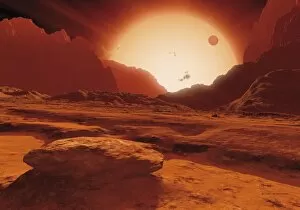Sun Spots Collection
Sunspots: Mysterious Dark Phenomena on Our Sun's Surface Sunspots, temporary dark areas on the Sun's surface, have intrigued scientists for centuries
All Professionally Made to Order for Quick Shipping
Sunspots: Mysterious Dark Phenomena on Our Sun's Surface Sunspots, temporary dark areas on the Sun's surface, have intrigued scientists for centuries. These phenomena were first recorded during the Solar Eclipse of 15 March 1572 at the Cambridge Observatory. James Nasmyth's engraving from 5 June 1864 captures the intrigue of these sunspot observations. Sunspots are not just cosmetic features; they are indicators of solar activity. The Proxima Centauri planet's artwork shows an artist's interpretation of a sunspot's influence on a planetary system. Sunspots are also linked to solar flares and coronal mass ejections, which can impact Earth's magnetic field, causing auroras like the one depicted in this 1872 engraving of the Aurora Borealis. Sunspots follow an 11-year cycle, with increased sunspot activity during solar maxima. This cycle was illustrated in an 1875 artwork of the Solar Structure and Life-cycle. Sunspots were also observed on other planets, like Mars in 1877, and even on Jupiter in 1880, demonstrating their prevalence throughout the solar system. Total solar eclipses, such as the one captured in this 1878 engraving, offer a unique opportunity to study sunspots in greater detail. As we continue to explore the Sun and its phenomena, sunspots remain an essential part of our understanding of solar activity and its impact on our planet.









